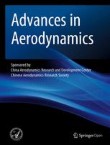Kun Xu1, Zhigong Tang2, Dongsheng Wen3, and Jianqiang Chen2
1. Department of Mathematics & Department of Mechanical and Aerospace Engineering, Hong Kong University of Science and Technology, Hong Kong, China
2. China Aerodynamics Research and Development Center, Mianyang, China
3. School of Aeronautic Science and Engineering, Beihang University, Beijing, China
School of Chemical and Process Engineering, University of Leeds, United Kingdom
Dear Colleagues and Researchers,
On behalf of the editorial board, we are honored to announce the launch of a new journal, Advances in Aerodynamics (AIA), and we are very pleased to share with you our vision for the development of this journal. AIA is an international peer-reviewed open access journal which publishes high quality papers with originality, novelty, and significant contributions to the progress in aerodynamics. The journal will provide authors with an open and fair platform to promote their research and identify themselves in the aerodynamics community.
In ancient times,aerodynamics was rooted in the pioneer findings of Icarus, Daedalus, Aristotle, and Archimedes. Its modern mechanical foundation was laid by Sir Issac Newton, and further formulated and enriched mathematically by Bernoulli, Euler, Navier, Stokes, Maxwell, Boltzmann, and many others. Based on the continuum mechanics assumption, Navier-Stokes equations have become the most fundamental and well-established governing equations in the past 250 years. Built on this, aerodynamics research has been progressed significantly in the last century through mathematical analysis and empirical approximations, as well as from the laboratory and numerical experiments via wind tunnels and high-speed computers. Aerodynamics has evolved into a solid discipline essential for the development of heavier-than-air flight, air-breathing propulsion, and many other advanced technologies. Most current active research in aerodynamics is still focusing on topics related to compressible flow, turbulence, boundary layers, and large scale modeling and simulations.
Traditional aerodynamics studies flow field around solid objects of various shapes, evaluates the lift and drag on an airplane, and models the wave interactions around a complex geometry in external and internal flows. In recent decades, the research in aerodynamics has progressed into a new era, where interdisciplinary becomes essential. For instance, non-equilibrium flow and multiscale transport have become focal research topics in supersonic and hypersonic flow for high speed aircraft, near space flight and space exploration, as well as the flow in the micro-electro-mechanical systems. However, problems and challenges are still existing in aerodynamics research, such as the modeling and computation of non-equilibrium turbulent flow and the construction of valid and efficient multiscale methods connecting all flow regimes. At the same time, aerodynamics has been extended into a number of new areas such as automotive systems, wind energy and renewable energy industries, urban design, environmental pollution control, and weather forecast, as well as sport-related flow motion, facing many new problems. Fundamental research in aerodynamic theory, modelling and simulation, and experimental techniques, are much needed to advance the wide applications of aerodynamics, not only in conventional aerospace engineering, but also many emerging multi-disciplinary areas where both old and new problems exist.
The editorial board will take great effort to ensure the journal to publish high-quality peer-reviewed articles, which include original scientific research, comprehensive review, innovative engineering applications, and technical improvements in all fields of aerodynamics. In addition, articles from emerging multidisciplinary subjects are also welcome. We trust that the excellence of AIA will shape the future direction of aerodynamics research, and bring significant benefits to students, scholars, and researchers, as well as the sustainable development of the whole society.
Sincerely,
Kun Xu
Zhigong Tang
Dongsheng Wen
Jianqiang Chen
